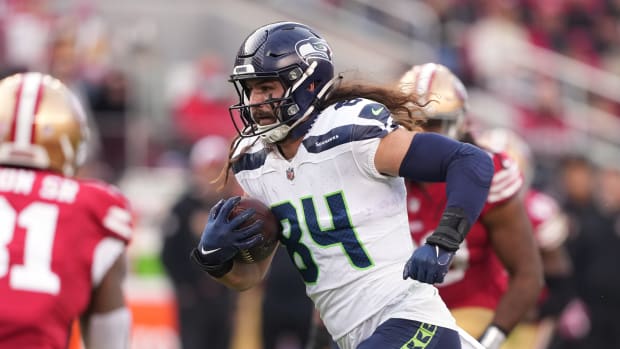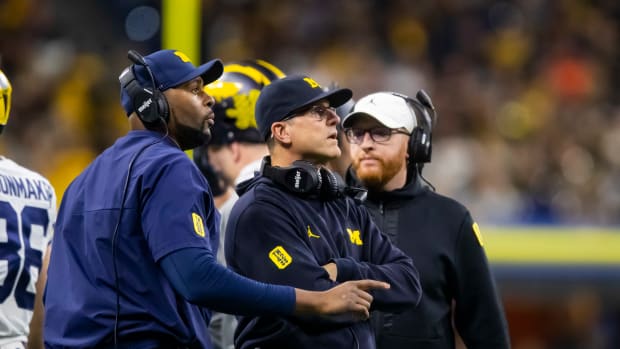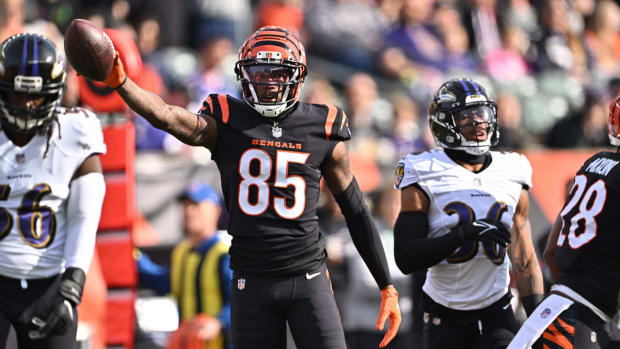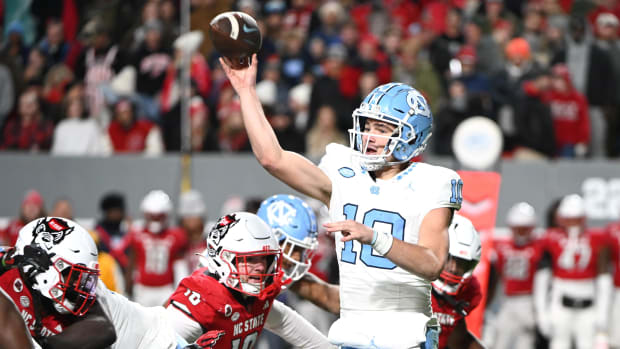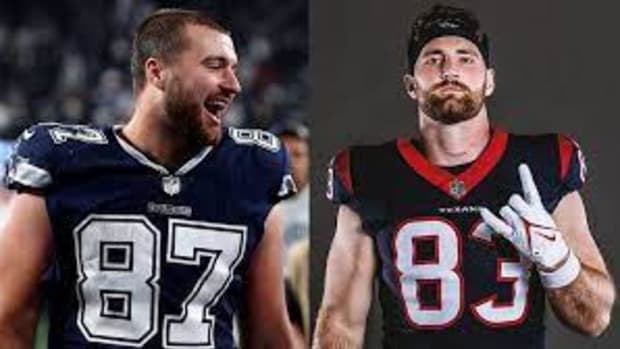Behind the Green and Gold Curtain: An Insider’s View of Mike McCarthy and the Packers
As I know so well from my near-decade of living Green Bay and working for the Packers, change is rare there, and when it does happen, it moves at a glacial pace. Not only are the Packers’ headquarters on Lombardi Avenue, but it often felt like as if team and the entire community were still living in an era when Vince Lombardi roamed the Packers sideline, a simpler time with the innocence of a bygone era.
Against that backdrop, the Packers’ firing of Mike McCarthy last week with four games remaining in the 2018 season was antithetical for a franchise and community often loathe to change. Having worked directly with Mike for three years, I will take you behind the Green and Gold curtain.
The Hire
Ted Thompson had come back to Green Bay (he worked there for years before) from the Seahawks in 2005 to become general manager, relegating then-head coach and general manager Mike Sherman to a coach-only role. For that entire season I witnessed a tense relationship between Thompson and Sherman, especially after we took Aaron Rodgers—a player who would not help us short-term—in the first round of the 2005 draft. Sherman’s fears about Thompson wanting “his own guy” to be the head coach were realized following that season, as he and his staff were dismissed.
Thompson led the subsequent head coach search, with input from his trusted personnel assistants John Schneider and Reggie McKenzie and, to a lesser extent, myself. After interviewing a list of candidates that included Ron Rivera, Brad Childress and Wade Phillips, we settled on two finalists: Mike, the 49ers’ offensive coordinator at the time, and Sean Payton, then the assistant head coach and quarterbacks coach of the Cowboys. Both had creative offensive minds, leading fascinating schematic conversations that would make a football junkie’s heart skip a beat.
KAHLER:How it all went wrong in Packerland
McCarthy won the tiebreaker over Payton due to the primary differentiator that he had worked for the Packers before, coaching our quarterbacks group in 1999. That familiarity with the team and the unique community gave Mike the nod over Payton, who told us how much he wanted the job. Of course, the Saints hired him soon thereafter, and the rest is, as they say, history.
The Coach
There is no pretense with Mike—what you saw was what you got—and that endeared him to many players. He spoke often of his working-class upbringing in Pittsburgh; he wore that hometown as a badge of honor. And his catchphrases about “accountability and availability” and “stacking successes” became part of who we were under Mike’s leadership.
With Mike’s support, I changed our player contracts to provide more of that accountability and availability. Players had become used to avoiding Green Bay in the winter and spring months, to train elsewhere. That had to change; we needed the team to come together in the offseason. I started drawing up our player contracts to separate out a portion of the player’s salary into an offseason workout bonus. For example, instead of paying a player a salary of $1 million, we would pay him $900,000 with a $100,000 bonus for participating in 90% of team workouts in the offseason (that would also provide him with cash flow before the season).
VRENTAS:Why McCarthy will be in demand for a head coach opening
While this sounds commonplace now, it was a major struggle to incorporate this change. I had to constantly battle agents requesting that the player’s trainer in Texas, California, Florida or some other desirable location simply send in daily or weekly reports about the player’s workouts. That, I maintained, was not good enough. We had to contractually build in more accountability and availability in the offseason, despite a location seen by some as less than ideal. And, over a span of a couple of years, Mike and I were able to change the contract model and culture.
Mike also had good emotional intelligence. He never got too high or too low; he knew the limited impact of cursing and screaming if it wasn’t used selectively; he rarely went off on those rants. He also highly valued work-life balance, more so after meeting—and marrying—a woman born and raised in Green Bay (they were set up by Schneider) with whom he inherited and added to a family. Mike gave his staff ample time away in the offseason and reaped the benefits of great loyalty and trust. He also understood his role as coach and deferred to Thompson on personnel and offseason acquisitions.
A “football guy” from western Pennsylvania, Mike became seamlessly and peacefully settled in a small community with a young family.
The Change
Although part of the team’s inner circle for nine years and still a devoted fan, I have no inside knowledge of what is going on inside team offices now. However, I can speak to my view of Mike and his relationship with players, including Aaron Rodgers.
Mike carefully and tactfully navigated that delicate three-year period during which Aaron served as apprentice to Brett Favre. As I know firsthand, those were tricky waters to sail through. Brett and his camp were not thrilled to show up at work every day with his future replacement, while Aaron and his camp had a hard time seeing a path to playing time. Mike, as always, handled both situations in a direct and honest fashion. And when the rubber met the road in the summer of 2008, when Brett wanted to return after retiring, it was Mike who uttered the six words that changed the course of Packers history: “Brett, we’ve moved on to Aaron.”
ORR:Ranking the potential head coach openings, best to worst
I never heard of any friction between Mike and Aaron. I can only surmise what many have: the inevitability of staleness in a 13-year relationship. Speaking from personal experience, I had a strong inner sense that it was time for me to leave after nine years in Green Bay. Perhaps Mike had that inner sense too, and the decision from the other side was expected and perhaps even welcome. For whatever reason, the partnership between Mike and Aaron, and perhaps Mike and the front office, seemed frayed. Not broken, not severed, but frayed. And change was needed.
The Timing
The Packers rarely make any changes, let alone in-season, involving a head coach with the gravitas of Mike. So why now?
Packers president Mark Murphy talked about giving Mike an opportunity to get an early jump on the market, as well as the embarrassing loss to the Cardinals at home. While all of those were certainly factors, and I know Murphy well and like him, I’m not buying it.
My sense is that the Packers have their eye on a candidate that they wanted to contact now, someone not currently working for an NFL team, rather than having to wait until January. Absent a candidate outside the league, why make this move now to simply interview NFL candidates under contract until after the season? I believe they did not want to reach out to a candidate while Mike had the position. I do not know who that candidate might be, but it’s likely a college coach who has time to interview before heavy bowl game/college playoff preparation begins in a week or so.
JONES:The coaching hot seat after Week 14
Murphy is also close with a search firm—the firm that brought Murphy to the Packers—and would be keenly aware of potential candidates inside and outside the NFL.
I also believe that the Packers want player input—yes, including from Aaron—on the next head coach. As anyone inside the league knows, the morning after the last game of the season, player parking lots resemble the start of the Indy 500; players are on to their offseason and untethered from the team. The timing of this Packers move gives the team a captive audience of the future coach’s pupils for the next few weeks; due diligence within their locker room can only help towards the future.
There is always more to these decisions than is publicly stated; that is the nature of sports businesses. I am not buying what the Packers are selling about timing here; there are business motives for this early dismissal.
The Attraction
I have heard reports saying that the other current NFL head coach opening—that of the Browns—is more attractive than the Green Bay opening. To that I say… please.
We can debate which roster is more equipped for future success, but a roster comparison is a shortsighted way of determining which head coaching position is more attractive. Simply, there is no working environment in the NFL, indeed in all of professional sports, that puts coaches in a better position to succeed than in Green Bay. I have seen it up close and personal.
Working for the Packers was working for a public trust with limited, if any, interference. There is no owner to demand a certain player be drafted or played over another; to divert resources away from the team; to meddle, or steal the spotlight; to create division or have employees call him “Mister.” I was trusted to do my job without interference in making decisions for the present and future health of the team. Like all coaching and front office employees there, I felt the magnitude of representing the vast Packer Nation, but was not awed by it. Coaches and front office personnel with the Packers can focus on football without distractions or drama from above.
A WEEK IN PACKERLAND:The MMQB’s stories from our December 2016 embed in Green Bay
Spinning back to Cleveland, Mike McCarthy was hired in Green Bay when the Browns coach was Romeo Crennel, seven head coaches ago! Browns owner Jimmy Haslam had a coach, Rob Chudzinski in 2013, who lasted one year. Haslam goes through coaching and front office personnel the way Pete Carroll goes through Chiclets. And, of course, how have the Browns stabilized their front office? By hiring a triumvirate that worked together in Green Bay: John Dorsey, Alonzo Highsmith and Eliot Wolf. And that group will certainly give strong consideration as their next head coach to, yes, Mike McCarthy.
The Aftermath
It is still mind-boggling that a city of 100,000 people is home to a team in the biggest sports league in the country. It is a team built on legacy and tradition, which explains in part why there is so much resistance to change. I remember when I started working there noticing that there was no way for people to contact the organization on nights or weekends, even through voice mail. When I inquired about it, the response I received was, “Why would anyone want to do that?”
And while Murphy is said to have more “power” than previous Packers CEOs, I doubt it. Yes he, along with general manager Brian Gutekunst, fired McCarthy, and he, Gutekunst and others will hire the next coach. However, once they do, it will be back to deference to Football Operations, as it always has been. Gutekunst, a Packers lifer, is a disciple of Thompson, valuing the draft above all else while sprinkling in occasional veteran free agent signings.
2019 MOCK DRAFT:Bosa goes No. 1, defense dominates first round
The wheels of change spin slowly in Green Bay, Wisc., and, for the next head coach, that’s a good thing. It is football first (and probably second and third, too). McCarthy thrived in that environment for the vast majority of his 13-year run, more than a lifetime in the NFL. I was there nine years, as was Ron Wolf. Mike Holmgren lasted seven before moving to Seattle. And all of them—except for me, of course—have Green Bay streets named after them.
The Packers will hire whomever they want to hire, as that person will know there is no better head coaching position in the NFL. The universally admired Packers may be the best story in sports.
Question or comment? Email us at talkback@themmqb.com.
































